*79 F. record high in the Twin Cities Friday.
71 F. old record set in 1930.
41 F. average high for March 16.
52 F. high temperature a year ago, March 16, 2011.
1.3" snow so far in March at KMSP.
10.4" average March snowfall for the Twin Cities. 1971-2000 data set, courtesy of
NOAA.
Coating of snow (2/10ths of an inch) 9 days ago in the metro - low 80s likely this afternoon.
+9.8 F. March temperatures are running nearly 10 F. warmer than average as of Thursday in the Twin Cities.
 What's 40 Degrees Among Friends?
What's 40 Degrees Among Friends? High temperatures today will run roughly 40 degrees above average. To put that into context, a 20 degree temperature anomaly is fairly significant. +40 F. is off the charts. If the sun is out for a few hours today and Sunday highs should reach, or even top, the 80-degree mark. If we hit 80 it will be the earliest 80-degree high in Twin Cities recorded history. After another record-setting day on Monday (mid 70s) a little rain cools us off Tuesday - you may even need a (light) jacket the latter half of next week. Highs in the 50s? We can handle that.
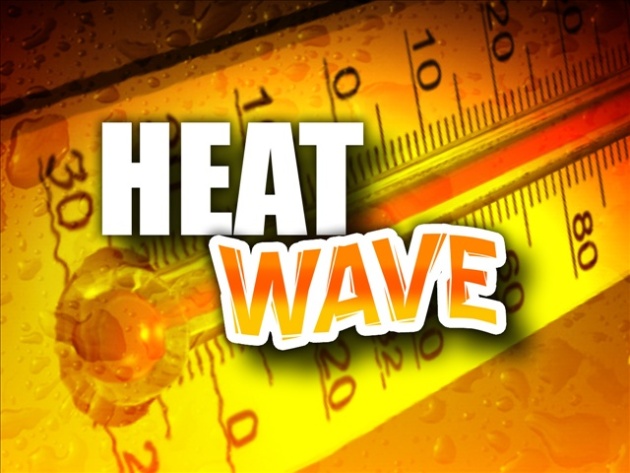 1486
1486 record highs in the last week across the USA.
808 records for warmest minimum temperatures across the USA in the last 7 days.
577 warm weather records broken, nationwide, on Wednesday. Source: NOAA.
Friday Records:
80 Eau Claire
68 Duluth International Airport
 A Map Unlike Anything I've Ever Seen
A Map Unlike Anything I've Ever Seen. Nearly 3,000 daily weather records in just the last week? Unprecedented, historically. I
honestly can't remember a week like this (in March). 1,486 high temperature records, 808 temperatures for warmest nighttime lows. Check out the interactive map from Ham Weather, data courtesy of NOAA.
| Total Records: | 2912 |
| Rainfall: | 419 |
| Snowfall: | 55 |
| High Temp: | 1486 |
| Low Temp: | 18 |
| Low Max Temp: | 126 |
| High Min Temp: | 808 |
2-Day Record High Tally: 835. That's a staggering number of records, unlike anything I've ever witnessed in my 36 years tracking the weather. Check out the numbers for yourself, on an interactive map from
Ham Weather. Data courtesy of NOAA.
First Severe Storms Of 2012. A surge of warm, sticky air set off a cluster of fast-moving storms over Wisconsin Friday evening, with reports of dime-size hail near Eau Claire, Wisconsin.
 EF-3
EF-3 tornado in Dexter, Michigan - earliest large, violent tornado in Michigan history, dating back to 1950.
Photo credit above: "
In the neighborhood of Huron Farms, the hardest hit area of yesterday's tornado in Dexter, Michigan, the home of veteran William Harvey Dusbiber, 87, is cleared, with only the things that are salvageable are being saved for him. The items included Second World War memorabilia and other keepsakes. (Regina H. Boone/Detroit Free Press/MCT)."

St. Patrick's Day Trivia. Did you know: St. Patrick’s Day celebrates the patron saint of Ireland, St. Patrick. The US started celebrating the holiday in 1737. The imbibing of alcohol comes from a story about St. Patrick where he was shorted an amount of whiskey by a greedy innkeeper. The average american spends $39 on St. Patrick’s Day, most of which is alcohol. The largest St. Patrick’s Day parade takes place in New York, the smallest is in Dripsey, Cork, Ireland. That parade is 100 yards and takes place between the towns two pubs. If the mets would like to celebrate St. Patrick’s day on air, because green is not an option, they can wear orange. The three colors of the Irish flag are green for the Catholics, orange forPprotestants, and white for the truce between them. Photo credit:
montelena.com.
Happy St. Patty’s Day!"

"
Any American boy can be a basketball star if he grows up, up, up." - Bill Vaughn
March Meteorological Madness. The MN State Climate Office has a good summary of records for MSP, St. Cloud, International Falls and Duluth. More from the
Minnesota Climatology Working Group: "
Mother Nature is rearranging her trophy case. An unprecedented mid-March influx of warm, moist air has produced record-setting temperatures for many locations east of the Rockies, including Minnesota. During this warm stretch the maximum temperature in the Twin Cities is forecasted to reach or exceed 70 degrees on multiple days. The greatest number of maximum temperatures at or above 70 in March occurred in 1910 when warm and dry conditions resulted in five such days. The forecast also calls for temperatures of at least 70 on consecutive days during this warm spell. The longest such stretch of maximum temperatures at or above 70 was three days and occurred on two occasions from March 23 - 25 of 1939 and March 22 - 24 of 1945."
March Dew Point Trivia. We may set a dew point record for March: the highest quantity of water vapor ever measured in the sky above MSP. A warmer atmosphere can hold more water. Dr. Mark Seeley has more in his always-informative weekly
WeatherTalk Blog: "
One further note, thunderstorm season may come early as well, especially if dewpoints reach into the 50s and 60s F this weekend and next week. The highest March dewpoint in the Twin Cities climate record is 60 degrees F on March 24, 1945. But this value may be surpassed next week as strong warm, moist air from the south is expected across the state, with increasing chances for thunderstorms."
Florida: most tornadoes per square mile of any state in the USA from 1950-2010. Details below.
5% of America has an above-average risk of spring flooding this year. Last year the number was closer to 50%. Source: NOAA.
 324
324. The number of consecutive months global temperatures have exceeded the long-term averages. Source: NCDC.
February: Record Warmth For North America, While Europe Shivered. In spite of the cold snap on the other side of the pond, February was the 324th consecutive month of above-normal temperatures, worldwide, according to NOAA. "February marks the 324th consecutive month of temperatures above the long-term averag. The globe experienced its 22nd warmest February since record keeping began in 1880. Arctic sea ice extent was the fifth lowest extent on record for February at 6.9 percent below average. Additionally, La Niña conditions continued to weaken during February. According to NOAA’s Climate Prediction Center, La Niña is expected to dissipate by the end of April. Read the full story on the National Climatic Data Center
FB page.
A Spring-Worthy Vehicle? 5 tips to get your car or truck ready for spring below. Uh, it's summer. What the heck happened to "spring"?
Duluth Sunrise. Thanks to Jeff Ernawine for sending in a terrific photo. Residents of Duluth will have gone from 14" snow and wind chills in the teens to mid/upper 70s, in the span of less than 2 weeks. Impressive.
 Sunday Severe Outbreak?
Sunday Severe Outbreak? We have dynamics in place for a significant outbreak of severe T-storms Sunday afternoon and evening from Sioux Falls, South Dakota to Wichita and the panhandle of Texas. I don't think this will rival the March 2 outbreak, but people living in the central Plains will need to stay alert Sunday, as a big storm plaguing the west finally lifts east, enough wind shear and instability for large hail and a handful of possible tornadoes. Map:
SPC.
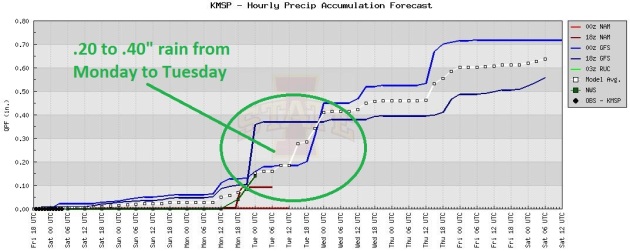 Just Enough Rain To Settle The Dust.
Just Enough Rain To Settle The Dust. We are running a significant 6-month rainfall deficit across much of Minnesota. We need 3-6" to pull out of this drought, but models are printing out .2 to .4" rain from Monday afternoon into Wednesday morning. I could see a few T-storms here Monday PM
hours, probably generic rain showers Tuesday, maybe a surge of steadier, stratiform rain as a wave of low pressure ripples up the cool front late Tuesday into early Wednesday.
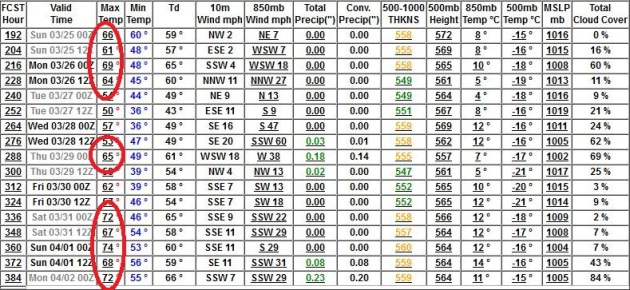 Don't Buck The Trends
Don't Buck The Trends. It will cool down (slightly) the end of next week, with a few days in the 50s. That's the new definition of a "March Cold Front" I guess. But the GFS bounces the mercury back up into the 60s and 70s around March 25-26, again around the 29th, with a warm spell the last few days of March into early April. Could that really be it for winter? I'm starting to suspect the (cautious/respectful) answer is yes. I know - I don't quite believe it yet either.
Weather Service Says U.S. To Get Break From Spring Flooding, But Not From Warmth, Drought. A good overview from
The Washington Post: "At least it’s a dry heat. The federal government’s spring weather forecast offers no respite from warmer weather, but the country should get a break from the spring flooding that’s hit the last four years. The National Weather Service’s outlook for spring, which arrived early with 577 warm temperature records broken Wednesday, predicts mostly warmer and drier-than-normal weather, except in the Northwest. The current summer-like weather — with some temperatures as much as 35 degrees above normal — is expected to stick around through next week. All or parts of 36 states are forecast to be warmer than normal April through June, with only Alaska, Hawaii, Washington and Oregon and the tip of Idaho forecast to be cooler than normal." Photo: Susan Walsh, AP.
Graphic above: This is NOAA's
Ensemble Streamflow Prediction, showing a 0 to 20% risk of river flooding for most of the Upper Midwest. Ice jams are triggering some flooding across North Dakota, but that's certainly the exception and not the rule: "
Click on a point to view location's Probabilistic River Forecast graphics. Click within a forecast group to zoom to that forecast group. Select a flood category tab to switch categories. From the forecast group view, select the same flood category tab to return to the main image for that category."
 Chicago: Does A (Very) Warm March Imply An Extra-Hot Summer?
Chicago: Does A (Very) Warm March Imply An Extra-Hot Summer? Here's an interesting read, courtesy of the
Chicago National Weather Service: "
From this table we can see that years with very warm Marches ended up having very warm springs. The spring of 1921 was the second warmest on record. In fact all but 1973 ranked in the top 20 all time. But a similar correlation with warm summers does not exist. Three of the summers following a warm March were above normal and only 2 were much above normal. Summer of 1921 was the 3rd warmest on record. But 2 of the summers were near normal and 2 were below normal. We can also look at the number of days of 90 degree weather. Three of the years had an excessive number of 90 degree days, 3 had less than the normal number of 90 degree days, and one was close to normal."
A Rare March Supercell In Michigan. The classic "hook-echo" is a tell-tale sign that a severe storm is rotating. It doesn't automatically mean a tornado is on the ground, but it's a (strong) tip-off that a storm is a "supercell", capable of spinning up large hail and a possible tornado. More from the Philadelphia office of the NWS via Mark Zuckerberg at
Facebook: "
Above is a radar image from late yesterday afternoon, March 15th, of a very impressive supercell thunderstorm that tracked across portions of southeastern Michigan. Note the pronounced hook on the left side of the storm. Significant damage was reported not to far from Dexter, Michigan, which is northwest of Ann Arbor. The severe thunderstorm also produced hail up to 2 inches in diameter."
Severe Storm Readiness Tips For Homeowners. Here are some good action items, before, during and after the storm, from
Quad Cities Online:
* Put a family communication plan in place and prepare an emergency supply kit, including a battery-powered NOAA Weather radio.
* Remove dead trees and branches that could fall on your property or home.
* Repair roof leaks, clear clogged gutters and fix broken or loose doors and windows.
Before the Storm Hits
* Postpone outdoor activities and secure outdoor objects that could become airborne.
* Seek shelter in a home, building or hard top automobile. The steel frame of a vehicle – not the rubber tires – can help protect you from a lightning strike if you avoid touching metal or other conductive surfaces.
* Close shutters, if available, and secure outside doors. Close window blinds, shades or curtains. Unplug electronic equipment, including appliances, air conditioners and computers.
During the Storm – In Your Home
* Don't use corded phones or any appliances that are "plugged in." Use cell or cordless phones instead.
* Avoid contact with plumbing. Don't wash your hands, take a shower, or do dishes or laundry. Minimize contact with bathroom fixtures.
Has The Sun Driven Recent Precipitation Extremes In The Northeast? Matt Rogers has an eye-opening story at The Washington Post's must-read
Capital Weather Gang: "
New research published recently in the peer-reviewed journal Geophysical Research Letters presents evidence to suggest that the solar cycle plays a significant role in precipitation fluctuations in the Northeast U.S. A pair of researchers (Jonathan Nichols from Columbia University and Yongsong Huang from Brown University) analyzed an impressive 6800-year hydrogen isotope record from the Great Heath, a peatland in coastal Maine. They discovered a significant correlation between solar variations (high/low solar irradiance) and wet/dry periods in the Northeast."
Graphic credit above: "
Precipitation shows an upward trend over the last decade in the Northeast. Is it linked to decreasing solar activity? A recent study suggests it’s possible. (NOAA, adapted by CWG)."
Florida Named #1 Tornado State. I went to school with Dr. Greg Forbes - great guy, and he definitely knows his severe weather. Here's an excerpt of a story from
bradenton.com: "
Florida recorded the highest concentration of tornadoes in the United States between 1950 and 2010, according to a Weather Channel expert. Greg Forbes calculated a Top 10 list by counting the number of tornadoes between 10,000 square miles in each state. Here is what he had to say about what makes Florida such a tornado magnet: "Several things contribute to there being a lot of tornadoes in Florida. ... It's surrounded by water so they can get tornadoes any month. Also, Florida is the thunderstorm capital of the United States. It has the most thunderstorms per square mile and some of those storms produce tornadoes." Photo of tornado/waterspout over Miami courtesy of
city-data.com.
Fear The Funnel - Be Prepared For Tornadoes. Some timely advice from
lovelycounty.com: "
Your emergency plan will depend on where you live. If you live in a mobile home, identify the nearest sturdy building where you may escape to in an emergency. If you live in a typical one-story home, identify your safe place, which should be toward the strongest interior wall and away from windows. Bathrooms with no windows, or interior hallways, are good. Businesses should have this conversation also. If you have a basement, congratulations! Clean it up and get it ready because that is the place where all experts say you should go. In a two-story or higher building, go to a safe place on the bottom floor. It is a myth that houses explode from the pressure difference created by the swirling of the tornado, and therefore it is a not a good idea to open windows to equalize the pressure. Houses are destroyed by the incredible force of the winds and by objects as big as houses blown by the winds. It is not advisable to try to outrun a tornado in your vehicle unless you know exactly where the road ahead leads and what you will do when you get somewhere."
St. Patrick's Day Hurricane (Cyclone) Threat For Australia.
AccuWeather.com has the details: "
St. Patrick Day's will be far from festive in North West Australia with hurricane-strength Tropical Cyclone Lua set to slam onshore. Friday evening (local time, Friday morning EDT), Lua was churning off the coast of Australia with the strength of a Category 1 hurricane. The warm waters of the Indian Ocean will help Lua's strength increase to that of a strong Category 2 hurricane with maximum sustained winds between 100 and 110 mph (160 and 175 kph) prior to the cyclone's St. Patrick's Day landfall."
French Toast. North America isn't the only continent feeling the heat: "
Tourists and Parisians take advantage of warm temperatures in the French capital in the garden of the Senate, the French Upper House of Parliament, visible in background, in Paris Friday March 16, 2012. The weather in France is surprisingly warm for March. (AP Photo/Francois Mori)."
Five Tips To Get Your Car Ready For Spring. I thought there was some good advice here, from
beatthetraffic.com:
- Get rid of road salt on the undercarriage. Road salt can damage your vehicle by eating away at its undercarriage. Use a garden hose with as much water pressure as your system can have to loosen winter grime and salt.
- Check the tires. Believe it or not, tire pressure changes up to a pound per square inch for every 10 degrees in temperature change outdoors. Underinflation allows your tires to wear unevenly on the sides. Plus your gas mileage will suffer.
- Change your wiper blades. How much abuse have your wipers taken this winter? Battered by snow, sleet and wind…Spring typically brings with it a lot of rain, so you will most likely need to use them in the next few months
* very funny photo above courtesy of
captionwit.com.
Gulf "Dead Zone" Lawsuit Brought Against EPA By Environmental Groups. The story from
Huffington Post: "
Several environmental groups are suing the U.S. government to curb pollution of the Mississippi River with fertilizers and other contaminants blamed with creating a "dead zone" the size of Massachusetts in the Gulf of Mexico. In separate federal lawsuits filed Tuesday, the groups asked judges to force the U.S. Environmental Protection Agency to set base guidelines for state water quality standards and for wastewater treatment, both aimed at reducing pollution in the Mississippi River Basin. The basin stretches from the Rocky Mountains in the west all the way to New York state in the east. It funnels water south through the agricultural heartland and industrial states to Louisiana and the Gulf of Mexico." Photo: AP.
Snowboard Built For Survival Helps You Battle The Elements. The story from
gizmag.com: "
Part Swiss Army knife, part splitboard and part old school powder surfer, the Signal Snowboard Survivor Split snowboard is a one-of-a-kind, experimental board that equips you with all kinds of tools for the backcountry - it can cut wood, start a fire and shovel snow."
Outpouring Of Support For KRDO's Rachel Plath After Video Of Her Swearing On The Air Goes Viral. There, but for the Grace of God, go I. I am not sitting in judgement - feel bad for Rachel.
TVSpy.com has more details on her unfortunate choice of words: "
KRDO meteorologist Rachael Plath has seen an outpouring of viewer support this week after video of her exclaiming “son of a bitch!” in the middle of a forecast (video above) aired live on the Colorado Springs ABC-affiliate. “Thanks for being human and don’t sweat it,” one fan wrote on her Facebook wall. “You are great in my book.” “I think it’s great to know you’re human. Thanks for being real,” another comment read." (rated PG for mild profanity).
Heart Disease Drug Found To Reduce Racist Attitudes. I had no idea.
Gizmag.com has the details: "
Although racism is widely believed to be a learned behavior, findings from an Oxford University team suggest that taking a heart disease medication may also help mute subconscious racist attitudes in individuals. Researchers gave the drug propranolol to 18 subjects, and placebos to a control group of the same size. Those that received the drug scored markedly lower on a standard test that measures subconscious racial bias. Does this mean we could one day see a pill to counter racist tendencies?"
iPad 3 4G Tear-Down. Possibly more than you ever wanted to know about the new & improved iPad from
ifixit.com: "
Join us for the iPad 3 4G teardown. Follow iFixit on twitter for the latest up-to-date news."
What Are You Doing Sunday Evening? Here's a suggestion: turn off 60 Minutes and head down to
The Fine Line to check out "
The Lost Wheels", one of the most exciting new rock/blues bands to hit the Twin Cities music scene in a long time. Trust me, I'm a weatherman. They have a great sound, and there's no cover charge. Hope to see you down there Sunday evening to see 3 terrific bands, including one that's near and dear to my heart.
WeatherNation. Our new, national weather channel, "WeatherNation", is coming to KARE 11.2. Which means you can get it over the air, or on your local cable system. Our 11 meteorologists will be teaming up with Belinda, Sven, Pat, Jerrid and Laura to provide the most comprehensive local, regional and national weather information available anywhere. All weather - no filler. Stay tuned for more details, launch is imminent (and I'm very excited to be working with former colleagues at KARE-11 again). Good memories.
Instant Summer. We're not messing around with "spring" this year. What a waste of time. Come to think of it, a 6 month summer sounds nice. Just this year. Who knows what 2013 will bring? Friday highs ranged from 54 Grand Marais and 55 at Duluth to 76 St. Cloud and Alexandria, 79 at MSP International and 82 at Eden Prairie and Redwood Falls. Remarkable.
"
There is no surprise more magical than the surprise of being loved. It is God's finger on man's shoulder." - Charles Morgan
Read more here: http://www.bradenton.com/2012/03/15/3941686/florida-named-no-1-tornado-state.html#storylink=cpy
Raging Hormone Alert. Ah, spring. Thoughts turn to...um...cleaning up after the dog after a long, semi-cold winter (ok, a cool winter)....preparing your tax return...digging your musty summer wardrobeout of cold storage...having nervous chats with your tax accountant. What am I leaving out? Oh, never mind. "
Byan Smethers tries to steal a kiss from his girlfriend Holly Pollock while the couple take in the warm weather on the banks of the Mississippi River in Dubuque, Iowa, Friday. The Dubuque area reached a high of 78 degrees, tying the record set in 1945. (AP Photo/Telegraph Herald, Jeremy Portje)."
Paul's Conservation Minnesota Outlook for the Twin Cities and all of Minnesota:
TODAY: Hot sun, typical (for early July). Winds: S 15 Old record: 76 (1894). High: 82
SATURDAY NIGHT: Another record (for warmest nighttime low). Muggy with an isolated T-storm (mainly Wisconsin). Low: 62
SUNDAY: Hazy sun, July-like. Old record: 71. Winds: S/SE 10-20. High: near 80
MONDAY: Another record. AM sun. PM T-storms? Old record: 72. Low: 62. High: 77
TUESDAY: Few showers. Old record: 66 (1938). Low: 60. High: 69
WEDNESDAY: Mostly cloudy, lingering shower, still unsettled. Low: 48. High: 62
THURSDAY: More sun, still warmer than average. Low: 47. High: 59
FRIDAY: Mostly cloudy, light jackets return. A bit more March-like. Low: 42. High: 55
Welcome to July
On this glorious St. Patrick's Day I plan to a) clean up my yard, b) do some errands, and c) sit in my favorite Adirondack chair and soak up some vitamin D. I'll be enjoying today's historic heat, along with everyone else. But the small, muffled (slightly deranged) voice in the back of my head is yelling "This is too good to be true!" Like finding an extra grand in your checking account, or getting a big compliment from your Mother in Law.
One big huh?

or
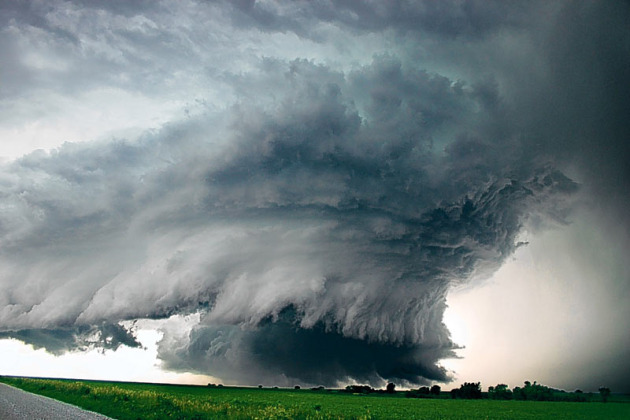
?????
"80s in mid-March, what's it going to be like in July, Paul?" Drought or tornadoes? Those are the 2 stark choices on our weather menu. I suspect drought would be far worse, economically, for Minnesota, but if we do get some real moisture in here, I expect to see a spike in severe storms and tornadoes.
Low 80s, on March 17? You'll be able to tell your kids about the year we went from winter (sort of) directly to summer.
Today's July-like airmass may be "capped"; too hot and dry aloft for T-storms to fire; a better chance over Wisconsin.
80 Sunday, records broken every day through Tuesday. An eastbound cool front sparks a little rain and thunder Monday & Tuesday; no soakings in sight.
Don't forget your March sunscreen!
"The universe is not required to be in perfect harmony with human ambition." - Carl Sagan
Climate Stories...
Natural Born Drillers. An Op-Ed from Paul Krugman at
The New York Times: "
To be a modern Republican in good standing, you have to believe — or pretend to believe — in two miracle cures for whatever ails the economy: more tax cuts for the rich and more drilling for oil. And with prices at the pump on the rise, so is the chant of “Drill, baby, drill.” More and more, Republicans are telling us that gasoline would be cheap and jobs plentiful if only we would stop protecting the environment and let energy companies do whatever they want."
Richard Branson Letter To David Cameron On Renewable Energy. Here's an excerpt from
The Guardian:
"Dear David Cameron,
As entrepreneurs, investors, economists, scientists, engineers, energy providers, community builders and Members of Parliament, we are increasingly concerned about the lack of clarity around the future of government support for land based renewables, such as solar, wind and biogas. In wind alone, the UK has more than 40% of Europe's renewable energy resources - enough to power up our economy 3 to 4 times over, generate exports, and provide the tools for communities and entrepreneurs to do their job. Bringing energy supply and demand together, a decentralised energy market can make real efficiencies in costs associated with our antiquated infrastructure and transmission loss, deliver savings for tax payers and provide frustrated investors with new opportunities."
* photo above courtesy of
Wikipedia.
Climate Change To Increase Respiratory Diseases. More information from
The Daily Democrat in Woodland, California: " The paper is published online and in print in the Proceedings of the American Thoracic Society. The society is the professional organization for pulmonologists, thoracic surgeons and respiratory therapists, among others. It issued the position paper to help its members know how to respond to these changes with their patients and within their communities, and to add their voices to calls for international cooperation to respond to the existing and anticipated negative health effects of global warming.
Worldwide increases in the incidences of asthma, allergies, infectious and cardiovascular diseases will result from a variety of impacts of global climate change, including rising temperatures, worsening ozone levels in urban areas, the spread of desertification, and expansions of the ranges of communicable diseases as the planet heats up, the professional organization representing respiratory and airway physicians stated in a new position paper released today."
 Global Warming: Pine Beetles Thriving At Higher Elevations
Global Warming: Pine Beetles Thriving At Higher Elevations. This is a growing concern:
if we don't see bitter cold (usually -40 F. is the threshhold) pine beetles and other pests can survive the winter, eating up far more trees, especially pines). The
Summit County Citizens Voice has more details: "
SUMMIT COUNTY — In one of the clearest signs yet that global warming is having a direct impact on the environment and economy of the Colorado high country, a trio of University of Colorado researchers say they’ve shown that mountain pine beetles have responded to climate change by speeding up their breeding cycle. Because of the extra annual generation of beetles, there could be up to 60 times as many beetles attacking trees in any given year, their study found. And in response to warmer temperatures at high elevations, pine beetles also are better able to survive and attack trees that haven’t previously developed defenses. That puts other high-elevation pine species, including limber, whitebark and even the iconic bristlecone pines at risk, according to CU graduate student Scott Ferrenberg, who launched the high elevation pine beetle study."
 Inhofe On The 97% Of Climate Scientists Who Agree Global Warming Is Real: "That Doesn't Mean Anything". Think Progress
Inhofe On The 97% Of Climate Scientists Who Agree Global Warming Is Real: "That Doesn't Mean Anything". Think Progress has the baffling details: "
Faced with global warming facts on the Rachel Maddow show last night, Sen. James Inhofe (R-OK) countered, “It’s not true.” Maddow asked him to react to the 97 percent of scientists who agree that global warming is real. Although Inhofe was eager to point to anecdotal evidence for his conspiracy theories, he simply replied:
"That isn’t true Rachel. You say something over and over again and your audience, particularly your liberal audience, they want to believe it [...] This 97 percent, that doesn’t mean anything. I’ve named literally thousands of scientists on the floor."
As a prominent climate denier and Big Oil favorite, Inhofe’s ignored the scientific evidence throughout the interview. But he’s not known for relying on scientific research — recently, he quoted the Bible as proof."
Data, More Data And Climate Change. The story from
theenergycollective.com: "
Climate change is one of those subjects that is awash with data, leading to an almost endless capacity for analysis and ultimately conclusion drawing. The same data can be used to create different analytical output and a single analysis can lead to more than one conclusion. This comes about not just from the climate data itself, but from energy use data, energy use projections and the combination of all of these into both simple and highly complex models which seek to map out climate scenarios for the balance of this century and beyond. A recent paper from Carnegie Institution, Stanford, CA looks at the differential climate impacts for the transition away from coal to various lower greenhouse gas energy systems, ranging from natural gas to hydro electricity. The authors modeled the temperature impact by 2100, based on a shift of 1 TW of coal generation capacity over the balance of this century. 1 TW was about the global coal capacity in 2000. Coal was picked as the base case because it is the most widespread method of generating electricity and is the most CO2 intense way of doing so. In the base case, warming from the continued use of 1 TW coal generation through to 2100 gives a temperature rise of 0.3°C."
6 Ways Climate Change Is Impacting Animals.
Treehugger.com has the story: "
Climate change has been blamed for failed crops, drought, severe storms, and rising seas—but these major shifts in weather and climate are only part of the story. Already, climate change is having a profound effect on ecosystems around the world, upsetting and altering the lives of numerous species of animals. Here are six animals that are struggling to cope with the changes wrought by climate change."
What's Going To Kill Us In 2050! Air Pollution, And Lot's Of It. The story from
The Washington Post: "
Air pollution tends to get wildly underrated as a public health concern. Everyone knows malaria is deadly. Or that access to clean water is a problem. And yet, in the next few decades, air pollution will kill far more people than both of those things combined, according to a new report.On Wednesday, the OECD released its “Environmental Outlook to 2050,” which contained a few spots of cheery news. Humanity is making steady progress against malaria.
Worldwide, the number of deaths from the disease are expected to fall by half by 2050. And fewer people will die from unsafe drinking water and poor sanitation in the future. But the number of deaths caused by air pollution — which includes ground-level ozone, particulate matter, and “indoor pollution” — are expected to skyrocket, killing more than 6 million people per year by mid-century. " Photo: Ed Jones, AFP.



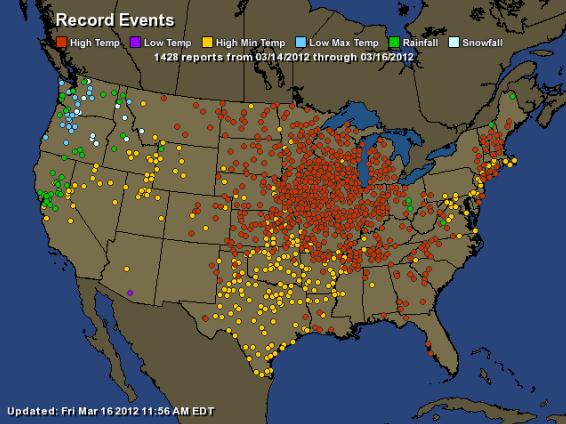




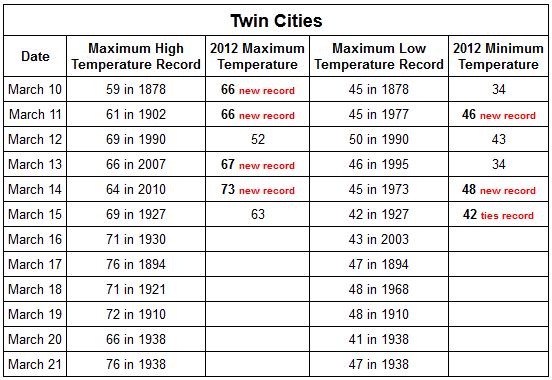 March Meteorological Madness. The MN State Climate Office has a good summary of records for MSP, St. Cloud, International Falls and Duluth. More from the Minnesota Climatology Working Group: "Mother Nature is rearranging her trophy case. An unprecedented mid-March influx of warm, moist air has produced record-setting temperatures for many locations east of the Rockies, including Minnesota. During this warm stretch the maximum temperature in the Twin Cities is forecasted to reach or exceed 70 degrees on multiple days. The greatest number of maximum temperatures at or above 70 in March occurred in 1910 when warm and dry conditions resulted in five such days. The forecast also calls for temperatures of at least 70 on consecutive days during this warm spell. The longest such stretch of maximum temperatures at or above 70 was three days and occurred on two occasions from March 23 - 25 of 1939 and March 22 - 24 of 1945."
March Meteorological Madness. The MN State Climate Office has a good summary of records for MSP, St. Cloud, International Falls and Duluth. More from the Minnesota Climatology Working Group: "Mother Nature is rearranging her trophy case. An unprecedented mid-March influx of warm, moist air has produced record-setting temperatures for many locations east of the Rockies, including Minnesota. During this warm stretch the maximum temperature in the Twin Cities is forecasted to reach or exceed 70 degrees on multiple days. The greatest number of maximum temperatures at or above 70 in March occurred in 1910 when warm and dry conditions resulted in five such days. The forecast also calls for temperatures of at least 70 on consecutive days during this warm spell. The longest such stretch of maximum temperatures at or above 70 was three days and occurred on two occasions from March 23 - 25 of 1939 and March 22 - 24 of 1945." March Dew Point Trivia. We may set a dew point record for March: the highest quantity of water vapor ever measured in the sky above MSP. A warmer atmosphere can hold more water. Dr. Mark Seeley has more in his always-informative weekly WeatherTalk Blog: "One further note, thunderstorm season may come early as well, especially if dewpoints reach into the 50s and 60s F this weekend and next week. The highest March dewpoint in the Twin Cities climate record is 60 degrees F on March 24, 1945. But this value may be surpassed next week as strong warm, moist air from the south is expected across the state, with increasing chances for thunderstorms."
March Dew Point Trivia. We may set a dew point record for March: the highest quantity of water vapor ever measured in the sky above MSP. A warmer atmosphere can hold more water. Dr. Mark Seeley has more in his always-informative weekly WeatherTalk Blog: "One further note, thunderstorm season may come early as well, especially if dewpoints reach into the 50s and 60s F this weekend and next week. The highest March dewpoint in the Twin Cities climate record is 60 degrees F on March 24, 1945. But this value may be surpassed next week as strong warm, moist air from the south is expected across the state, with increasing chances for thunderstorms."


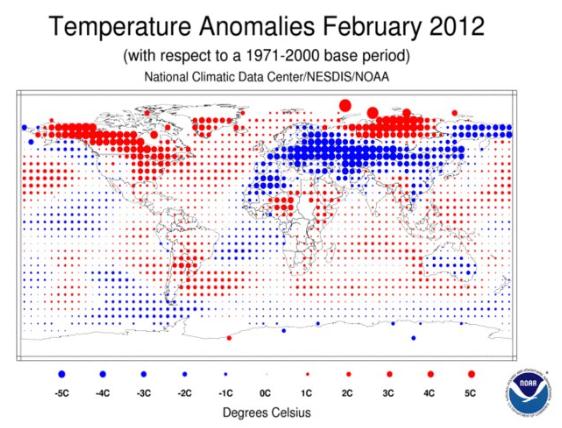









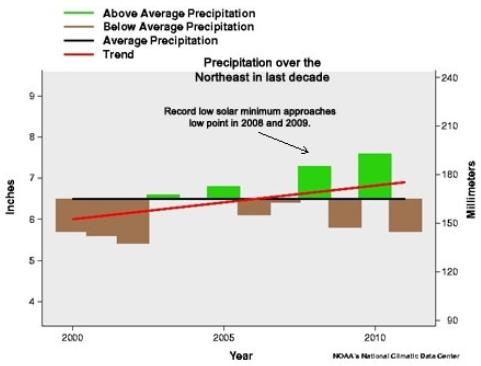
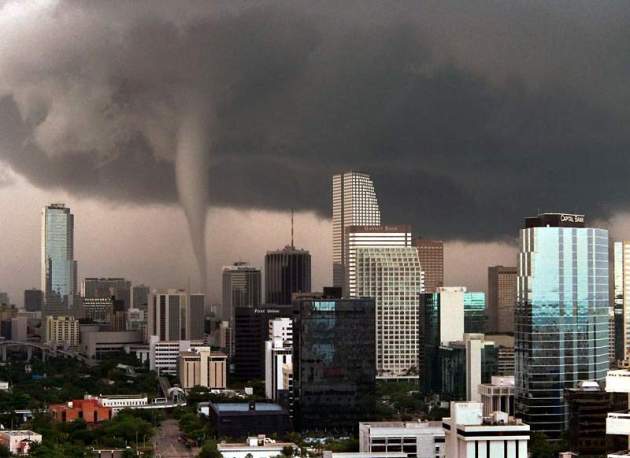
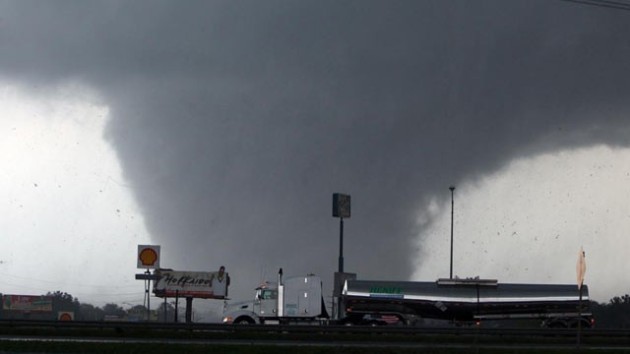


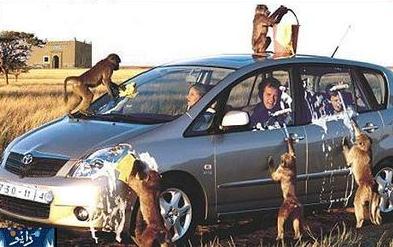


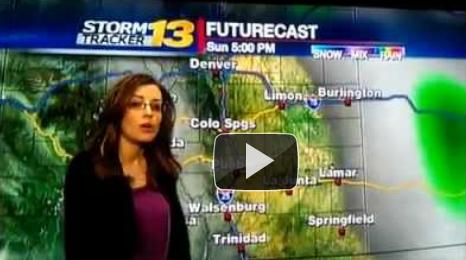








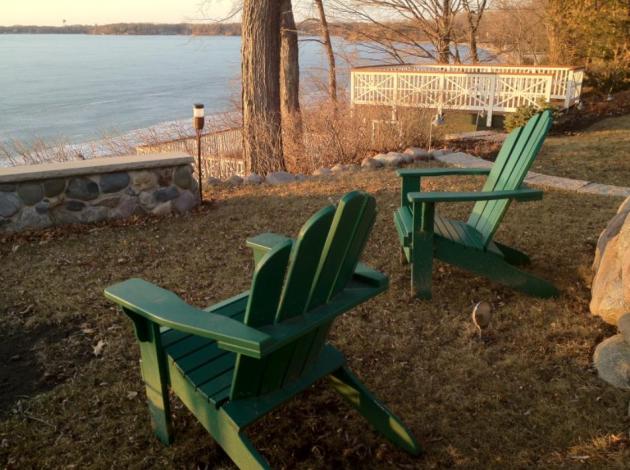
 or
or  ?????
?????
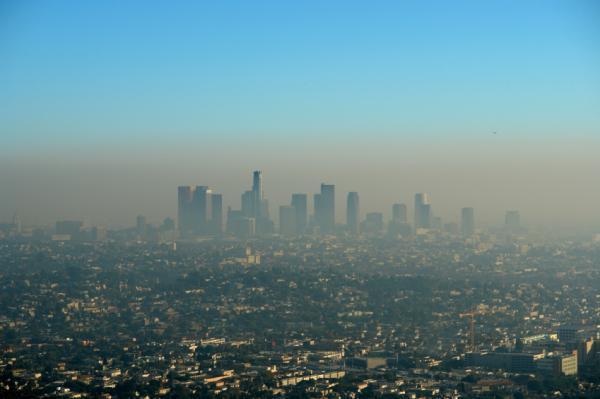


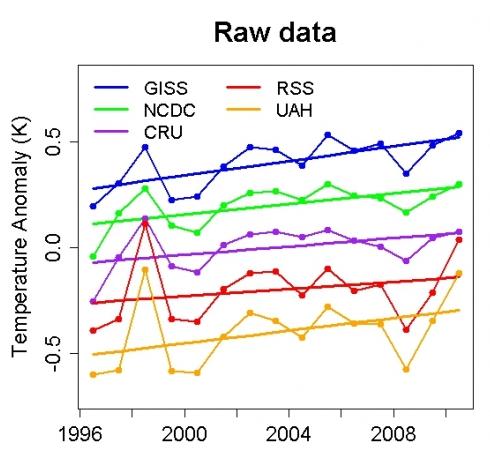

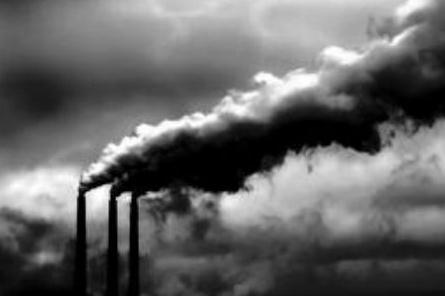
No comments:
Post a Comment